The Spring Fort DeSoto IPT #1: Practically Private
The Spring Fort DeSoto IPT #1. Tuesday 28 March through the morning session on 31 March 2023. 3 1/2 Days: $1899.00 includes three working brunches. Limit six photographers.
With no-one signed up for the first DeSoto IPT, you can sign up right now and be assured of a private or near-private trip. Shoot me an e-mail if you would like to join me or if you have any questions and scroll down for additional details. There is an excellent chance that we could share an AirBnB in Gulfport. DeSoto in late winter can be spectacularly good.
What’s Up?
On Friday, the last day of the first Homer IPT, we did a ton of image review and Photoshop work. I created Camtasia screen recordings of all the raw conversions and image optimizations and will be sending them to everyone in the group. Only Vasili is heading home today.
I ranked yesterday’s images as follows: #3, the striking eagle blur, because I got the eye sharp and I love the colors and the degree of blurring; tied for second: #4, the scenic, in part because I use Viveza for the first time in a long time to bring the bland, washed out raw file to life, and #1, for the color and graphic design. Strangely, #2, the banking eagle images used to be honored in the most prestigious photo contests, but today, with the great mirrorless cameras, they are now so easy to create that they have become almost commonplace.
Today is Saturday 25 February 2023. We will be sailing at 2:30pm and staying out late in hopes of a sunset. This blog post took more than two hours to prepare (including the time spent on the image optimizations) and makes three hundred thirty-two days in a row with a new educational post written just for you. Wherever you are and whatever you are doing, I hope that you too have a great day.
Please, please, pretty please remember to use my B&H or Bedford’s affiliate programs for all your new gear purchases. If you use B&H, please be sure to click on any B&H link in the blog to start your search. Or simply start with this link. There is always the option of e-mailing me for gear advice and for the correct links.
The plan is to continue to post every day until the streak reaches one year and one day and then begin posting every other day.
Please remember to use the B&H and Amazon links that are found on most blog pages and to use the BIRDSASART discount code at checkout when purchasing your new gear from Bedfords to get 3% back on your credit card and enjoy free second-day air FedEx. Please, also, consider joining a BAA IPT. You will be amazed at how much you will learn!
You can find some great photo accessories (and necessities, like surf booties!) on Amazon by clicking on the Stuff tab on the orange/yellow menu bar above. On a related note, it would be extremely helpful if blog-folks who, like me, spend too much money on Amazon, would get in the habit of clicking on the Amazon logo link on the right side of each blog post when they shop online. As you might expect, doing so will not cost you a single penny, but would be appreciated tremendously by yours truly. And doing so, works seamlessly with your Amazon Prime account.
Please remember that if an item — a Delkin flash card, or a tripod head — for example, that is available from B&H and/or Bedfords, is also available in the BAA Online Store, it would be great, and greatly appreciated, if you would opt to purchase from us. We will match any price. Please remember also to use my B&H affiliate links or to earn 3% cash back at Bedfords by using the BIRDSASART discount code at checkout for your major gear purchases. Doing either often earns you free guides and/or discounts. And always earns my great appreciation.
|
|
|
This image was created on 10 February 2023 by multiple IPT veteran and Galapagos 2023 registrant David Pugsley. Lying flat on his belly, he used the Panning Ground Pod-supported Sony FE 600mm f/4 GM OSS lens with the Sony FE 1.4x Teleconverter, and The One, the Sony Alpha 1 Mirrorless Digital Camera.. ISO 1000. The exposure was determined by Zebras with ISO on the rear wheel: 1/1000 second at f/5.6 (wide open) in Manual mode. Tracking: Zone/AF-C with Bird-Eye/Face Detection performed perfectly. Click on the image to enjoy the high-res version. Image #1: American Oystercatcher with tidbit |
A Little-Known Fact About Fort DeSoto
In the Fort DeSoto/Sarasota Site Guide, I write that this Pinellas County Park has the potential to offer great photography every day of the year. It is not that the photography is great every day, but that you can have a great day in winter, spring, summer, or fall. Be sure to stay away on mornings with clear skies and a strong NW wind. On Sunday July 4 many years ago, folks got fantastic images of a breeding plumage Curlew Sandpiper, a very- rare-in-the US shorebird breeds in the Siberian Arctic and migrates to sub-Saharan Africa, India, Sri Lanka, and Australia. Last fall a Bar-tailed Godwit was present at DeSoto and was easily found and photographed for several months.
It is not, however, the occasional rarity that makes DeSoto great. It is the very tame, regularly occurring species that have made it one of the top North American bird photography hotspots.
|
|
|
This image was created on 10 February 2023 by multiple IPT veteran and Galapagos 2023 registrant David Pugsley. Lying flat on his belly, he used the Panning Ground Pod-supported Sony FE 600mm f/4 GM OSS lens with the Sony FE 1.4x Teleconverter, and The One, the Sony Alpha 1 Mirrorless Digital Camera.. ISO 2000. The exposure was determined by Zebras with ISO on the rear wheel: 1/1000 second at f/5.6 (wide open) in Manual mode. Tracking: Zone/AF-C with Bird-Eye/Face Detection performed perfectly. Click on the image to enjoy the high-res version. Image #2: Willet with baby crab |
Lying Flat versus Foot- or Ankle Podding
All of the above allow you to work with very low perspectives.
Lying flat on the ground with a big lens makes it easier to find the bird in the frame and to photograph walking, running, and birds taking flight. Some folks are even able to shoot flight while prone. The two main disadvantages are back strain and muddy, wet, and/or sandy clothes. With a Panning Ground Pod or working off a flattened tripod topped with a Levered-Clamp FlexShooter Pro, following moving subjects is relatively easy.
Sitting and placing the lens on an ankle or between your feet or toes only gets your butt wet and muddy. When supporting the lens on some part of your foot or feet and working off the tilted rear monitor, it can be very difficult to find even a still subject in the frame. Panning and staying level is close to impossible. Sitting and working on a Panning Ground Pod or a flattened tripod with the tilted rear screen allows for panning, but it is not as easy to follow moving subjects as it is when lying flat. When I work off the tilted rear screen, I need my reading glasses so that I can see the AF icons and tracking.
|
|
|
This image was created on 10 February 2023 by multiple IPT veteran and Galapagos 2023 registrant David Pugsley. Lying flat on his belly, he used the Panning Ground Pod-supported Sony FE 600mm f/4 GM OSS lens with the Sony FE 1.4x Teleconverter, and The One, the Sony Alpha 1 Mirrorless Digital Camera.. ISO 640. The exposure was determined by Zebras with ISO on the rear wheel: 1/1000 second at f/5.6 (wide open) in Manual mode. Tracking: Zone/AF-C with Bird-Eye/Face Detection performed perfectly. Click on the image to enjoy the high-res version. Image #3: Forster’s Tern ruffling |
The Panning Ground Pod
The Panning Ground Pod currently shows as out of stock in the BAA Online Store. We can, however, have one drop shipped to you from Chris Klapheke of OPG. To order yours, please Call Jim in the office Monday through Thursday at 863-692-0906.
This product gets you super-low and enables you to pan easily with moving subjects. Can you say intimate?
|
|
|
This image was created on 10 February 2023 by multiple IPT veteran and Galapagos 2023 registrant David Pugsley. Lying flat on his belly, he used the Panning Ground Pod-supported Sony FE 600mm f/4 GM OSS lens with the Sony FE 1.4x Teleconverter, and The One, the Sony Alpha 1 Mirrorless Digital Camera.. ISO 500. The exposure was determined by Zebras with ISO on the rear wheel: 1/2500 second at f/5.6 (wide open) in Manual mode. Tracking: Zone/AF-C with Bird-Eye/Face Detection performed perfectly. Click on the image to enjoy the high-res version. Image #4: Non-breeding Laughing Gull taking flight after bath |
David Pugsley
Born in Pittsburgh, PA, David took a keen interest in photography back in 1986. The catalyst? The appearance of Halley’s comet. As an avid astronomer, he wanted to capture the comet on film, and he did just that.
That first venture into the world of photography lead to many classes and countless images during his high school years, followed by acceptance into Ohio University’s prestigious School of Visual Communications. While attending OU, he developed a love and appreciation for capturing a moment in time. Unfortunately, his path into a photography career would take a detour upon completion of his Bachelor of Fine Arts degree.
Happily, that detour — many years in the worlds of graphic design and marketing, came to an end in 2008 when he reignited his passion for both photography and the outdoors and its inhabitants. His goal is to capture wildlife (including and especially birds), nature, and landscape images that you would be proud to display on the walls of your home, office or business. You can see more of David’s images on his website here, on Instagram at pixels_by_pugs or on his FaceBook page: David Pugsley Photography.
David and wife Michelle will be traveling with me to the Galapagos this coming August.
|
|
|
This image was created on 10 February 2023 by multiple IPT veteran and Galapagos 2023 registrant David Pugsley. Lying flat on his belly, he used the Panning Ground Pod-supported Sony FE 600mm f/4 GM OSS lens with the Sony FE 1.4x Teleconverter, and The One, the Sony Alpha 1 Mirrorless Digital Camera.. ISO 500. The exposure was determined by Zebras with ISO on the rear wheel: 1/2500 second at f/5.6 (wide open) in Manual mode. Tracking: Zone/AF-C with Bird-Eye/Face Detection performed perfectly. Click on the image to enjoy the high-res version. Image #5: Ring-billed Gull preening |
Low Perspective Verticals
Creating low perspective verticals can be challenging even with a vertical grip can be challenging. It is easier with cameras that have monitors that can be tilted vertically. That feature is not available with the Sony a-1. If you have your face to the viewfinder rotating the lens clockwise in the tripod collar can help as this puts the shutter button on the bottom where it is easier to reach.
|
|
|
This image was created on 10 February 2023 by multiple IPT veteran and Galapagos 2023 registrant David Pugsley. Lying flat on his belly, he used the Panning Ground Pod-supported Sony FE 600mm f/4 GM OSS lens with the Sony FE 1.4x Teleconverter, and The One, the Sony Alpha 1 Mirrorless Digital Camera.. ISO 500. The exposure was determined by Zebras with ISO on the rear wheel: 1/2500 second at f/5.6 (wide open) in Manual mode. Tracking: Zone/AF-C with Bird-Eye/Face Detection performed perfectly. Click on the image to enjoy the high-res version. Image #6: Black-bellied Plover in non-breeding plumage pulling seaworm |
Strongest?
Which of David Pugsley’s six featured images is the strongest? Why?
Unsolicited via e-mail from Pete Myers
I just spent 4 days in the field in a graduate course in bird photography taught by Artie Morris at Fort DeSoto. After almost 50 years of experience pointing cameras at birds from the Arctic to Tierra del Fuego, New Zealand and beyond, I thought I was good enough. But what I learned from Artie in just four days has taken me to a whole new level. As he aptly puts it, “birds as art,” not simply bird photography. One of those 4 days was the most satisfying I’d ever experienced, anywhere. The IPT left me euphoric about what I’d learned, and frighteningly committed to recreating my portfolio with the techniques and insights he taught me.
Unsolicited via e-mail from IPT veteran Eugen Dolan
Arthur, Thank you very much for your overwhelming infectious enthusiasm that helped get me up on some mornings. Also, your ability to express yourself- and explain in great detail why you like or may not like an image – was very helpful in allowing me to better analyze my images. Eugen
Via e-mail from Jim Miller
I can’t stop thinking about how much fun the DeSoto IPT was, and how much I learned. There were so many things that suddenly made perfect sense after I had been confused for so long. Thank you very much for the wonderful trip, and for being a great teacher. As I worked through the raw files last week, I realized what a fantastic lens the 600 IS is. Thanks for the rental! Maybe someday I will be able to afford one. Some images for critique are attached. Thank you again, Artie. It was really wonderful to be with you and learn from you.
Via e-mail from Lee Sommie
I want to thank you for making the Fort DeSoto IPT; it was a fun and educational experience for me. I truly did not want the adventure to end. I now look through the viewfinder with an artist’s mindset. And the real bonus was making new friends with fellow students. Thank you for sharing your knowledge and enthusiasm for wildlife photography. I had a great time with you and look forward to more adventures on future IPTs.
Via e-mail from Muhammad Arif
I had a great time at Fort De Soto. Thank you for all the instruction, for your help and pointers; my photography has already improved tremendously, and I’ve never made such good bird photos before. I wish I could’ve joined you on Monday and Tuesday morning as well, but work got in the way. It was also nice meeting the folks on the IPT. Thanks again for everything and I hope to join you at a future IPT sometime again.
|
|
|
Fort DeSoto in spring is rife with tame birds, many in full breeding plumage. Click on the composite to enjoy a larger version. Clockwise from upper left around to center: Laughing Gull landing on head of Brown Pelican, Laughing Gull in flight, Reddish Egret sunrise silhouette, Great Blue Heron with needlefish, Yellow-crowned Night Heron with ghost crab, Roseate Spoonbill, Sanderling in breeding plumage, and white morph Reddish Egret in glorious breeding plumage. |
The 2023 Spring Fort DeSoto Instructional Photo Tours (IPTs)
Spring Fort DeSoto IPT #1: Tuesday 28 March through the morning session on 31 March 2023. 3 1/2 Days: $1899.00 includes three working brunches. Limit six photographers.
Spring Fort DeSoto IPT #2: Tuesday 11 April through the morning session on 14 April 2023. 3 1/2 Days: $1899.00 includes three working brunches. Limit six photographers/Openings: 5.
Spring Fort DeSoto IPT #3: Tuesday 9 May through the morning session on 12 May 2023. 3 1/2 Days: $1899.00 includes three working brunches. Limit six photographers/Openings: 4.
Fort DeSoto, located just south of St. Petersburg, FL, is a mecca for terns and gulls, wading birds, and shorebirds in spring. Many of the birds will be in full breeding plumage. Simply put, DeSoto is the new Ding Darling. Migrant shorebirds are in abundance, and many are exceedingly tame. We should have great chances on Royal and Sandwich Terns and both white- and dark-morph Reddish Egrets. Great Egret, Snowy Egret, Great Blue Heron, Tricolored Heron, and White Ibis are easy as well and we will almost surely come up with a tame Yellow-crowned Night-Heron or two along with some American Oystercatchers. We will enjoy lots of great flight photography, especially with the Brown Pelicans.
|
|
|
Again, Fort DeSoto in spring is rife with tame birds, most in breeding plumage. Click on the composite to enjoy a larger version. Clockwise from upper left around to center: Laughing Gull in flight, Yellow-crowned Night-Heron, Sandwich Terns copulating, Roseate Spoonbill, Great Egret with reflection, breeding plumage Short-billed Dowitcher, American Oystercatcher, Royal Tern, white morph Reddish Egret, and Snowy Egret in marsh. |
In Addition!
We should also get to photograph a variety of other shorebirds including Black-bellied, Semipalmated, Wilson’s, Snowy, and Piping Plovers, Willet, Dunlin, Short-billed Dowitcher, Marbled Godwit, and most especially, Red Knot, with many individuals in their handsome breeding plumages. In spring the T-shaped peninsula and the newly formed sandbar, Outback Key, are literally packed with avian treasures.
With just a bit of luck, we may get to photograph one of Florida’s most desirable species: Roseate Spoonbill. And we will surely get to do some Brown Pelican flight photography. With luck, they will have Laughing Gulls landing on their heads. And though not guaranteed, Wood Stork might well be expected. And we will be on the lookout for a migrant passerine fallout in the event of a thunderstorm or two.
|
|
|
Yes, Fort DeSoto in spring is rife with tame birds, most in breeding plumage. Click on the composite to enjoy a larger version. Clockwise from upper left around to center: breeding plumage Dunlin, dark morph Reddish Egret displaying, Laughing Gull vertical front-end portrait, Laughing Gull with prey item, landing on head of Brown Pelican, breeding plumage Royal Tern displaying, Royal Terns — pre-copulatory stance, Laughing Gulls copulating, Laughing Gull head portrait, breeding plumage Sandwich Tern with fish, and a rare treat, a breeding plumage White-rumped Sandpiper. |
What You Will Learn on a DeSoto IPT
- 1- The basics and fine points of digital exposure; how to get the right exposure every time after making a single test exposure (or before if you are using SONY gear).
- 2- How and why to work in Manual mode (even if you’re scared of it).
- 3- How to approach free and wild birds without disturbing them.
- 4- Lots about bird behavior and how to use that knowledge to help you create better images.
- 5- To age and identify many species of shorebirds including various sandpipers, plovers, dowitchers, and possibly yellowlegs.
- 6- To spot good situations and to choose the best perspective.
- 7- To see, evaluate, and understand the light.
- 8- To design pleasing images by mastering your camera’s AF system.
- 9- And perhaps most importantly, to evaluate wind and sky conditions and understand how they affect bird photography.
- 10- More than you could ever imagine.
|
|
|
You got it by now! Fort DeSoto in spring is rife with tame birds, most in breeding plumage. Click on the composite to enjoy a larger version. Clockwise from upper left around to center: Roseate Spoonbill, immature Brown Pelican in flight, the heron/egret hybrid, American Oystercatcher feeding, immature Royal Tern on railing, Great Egret morning silhouette, Black Skimmer in surf, and underside head portrait of Great Blue Heron. |
The Details
Morning sessions will run two and one-half to three hours; afternoon sessions about two. There is never a set schedule on an IPT — we adapt to the conditions. On cloudy mornings with the right wind, we may opt to photograph till noon and skip the afternoon session. That especially when the afternoon weather is looking iffy. We may opt to visit a great North Tampa rookery if conditions warrant that.
There will be a Photoshop/Image Review session before and after brunch (included) each of the three full days. That will be followed by Instructor Nap Time. Each of these IPTs will run with only a single registrant as I do not like disappointing anyone. The best airport is Tampa (TPA). Once you register, you will receive an e-mail with lodging information. Do know that it is always best if IPT folks stay in the same general area (rather than at home or at a friend’s place a good distance away).
Folks attending this IPT will be out in the field as early as possible and stay out late to take advantage of sunrise and sunset colors; this is pretty much a staple on almost all BIRDS AS ART Instructional Photo-Tours. Doing so will often present unique photographic opportunities, opportunities that will be missed by those who need their beauty rest and those who need to get home for a proper dinner. I really love it when I am leaving the beach at 9:30am on a sunny morning after a great session just as a carful or two of well-rested photographers are arriving … We will be getting wet.
Your $599 deposit is due now. Credit cards are OK for that. You can register by calling Jim or Jennifer during weekday business hours at 863-692-0906 with a credit card in hand. Once you leave a deposit, you will receive an e-mail with your balance statement and instructions for sending your balance check three months before the trip begins. If you wish to pay in full right off the bat, you can make your check out to BIRDS AS ART and send it via US mail here: BIRDS AS ART, PO BOX 7245, Indian Lake Estates, FL 33855. You will receive a confirmation e-mail with detailed instructions, and clothing and gear advice two months before the trip. Please shoot me an e-mail if you plan to register or if you have any questions.
IPT veterans and couples or friends signing up together may e-mail for discount information.
Typos
With all blog posts, feel free to e-mail or to leave a comment regarding any typos or errors.

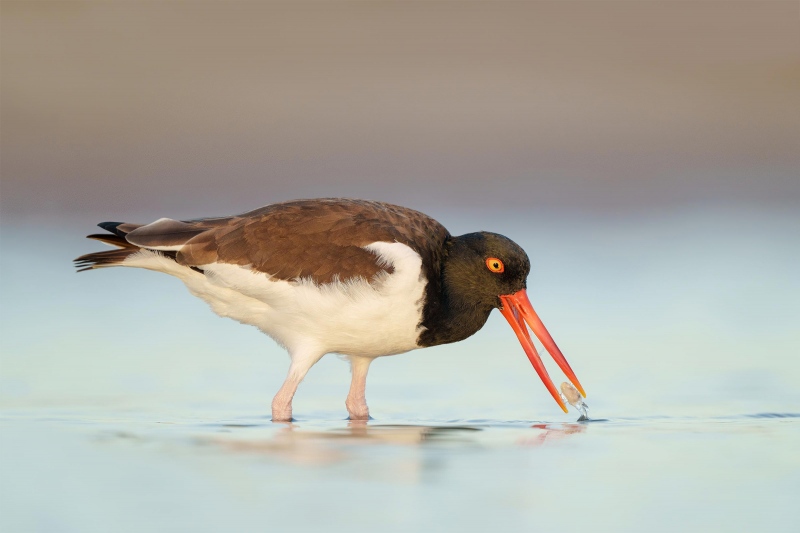
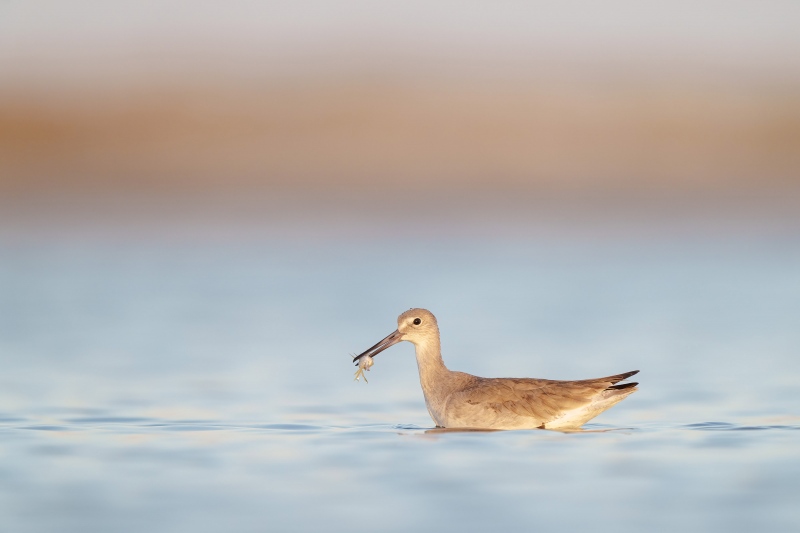
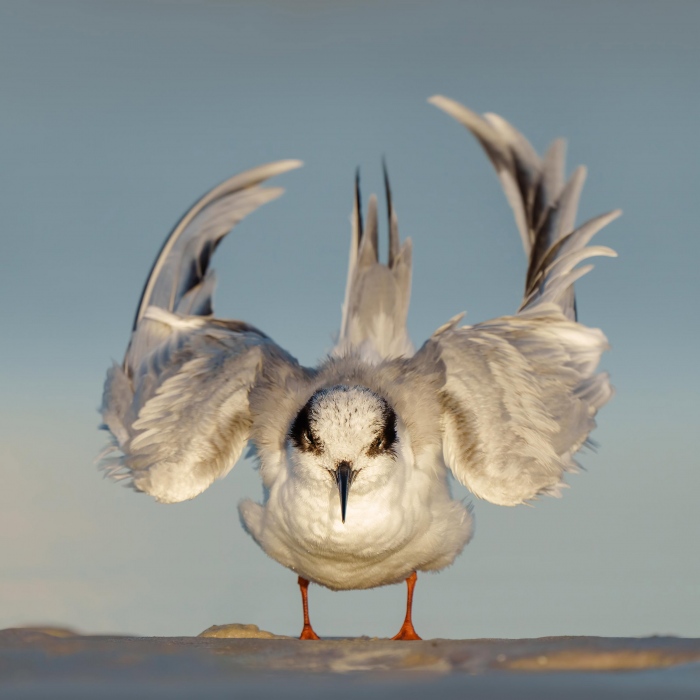
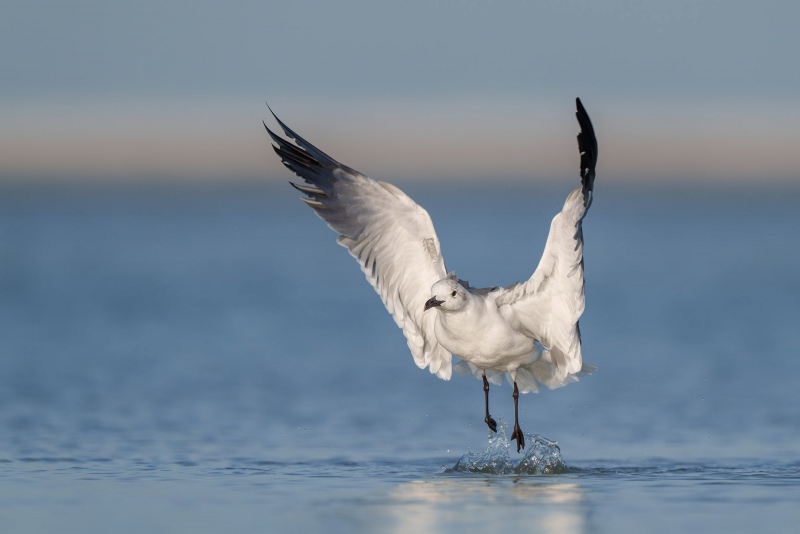
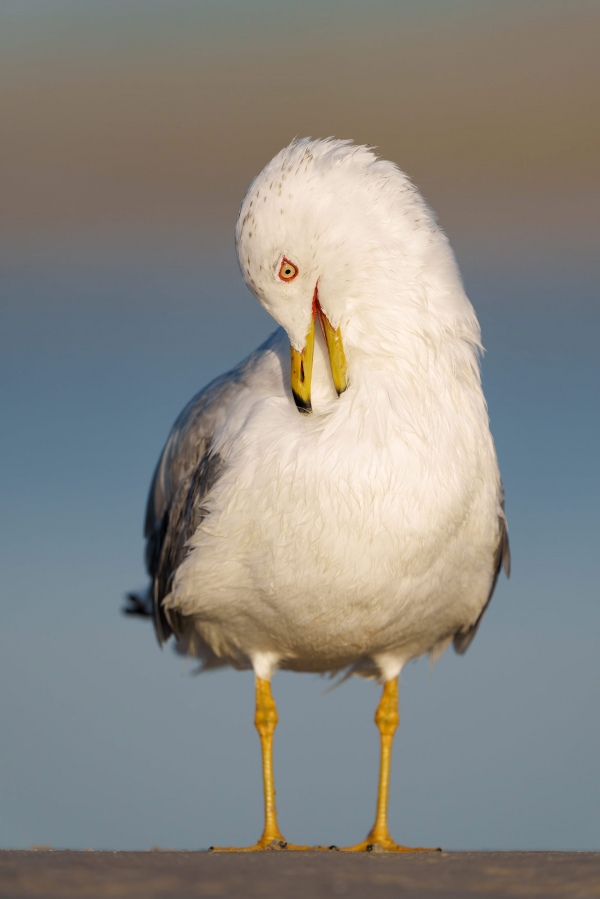
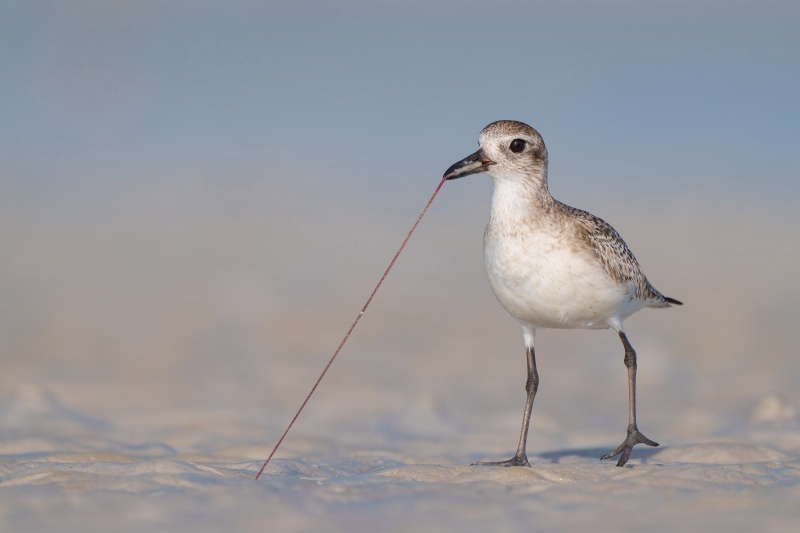
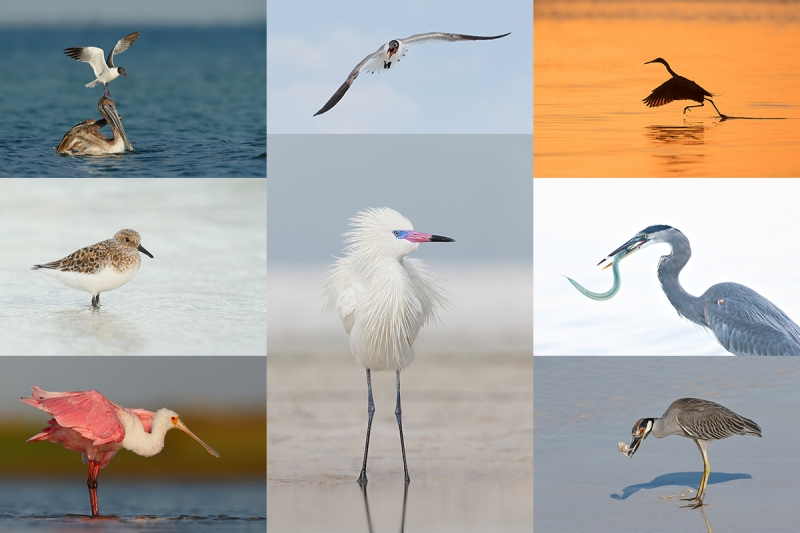
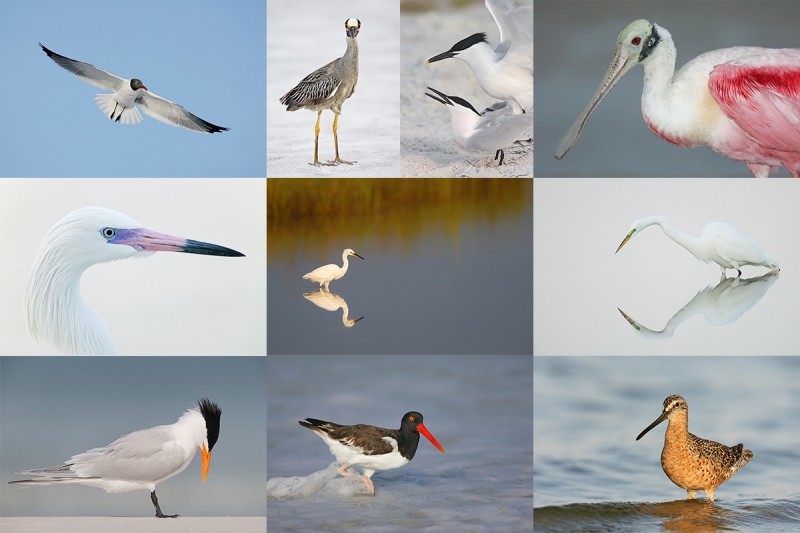
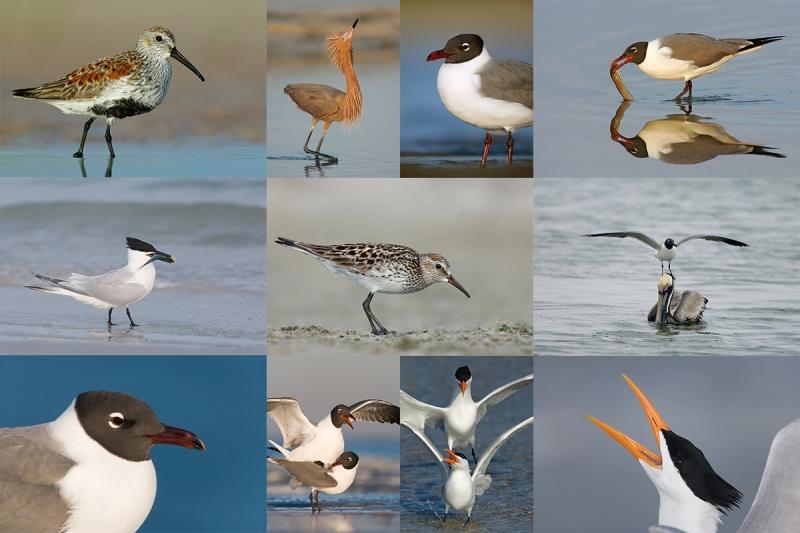
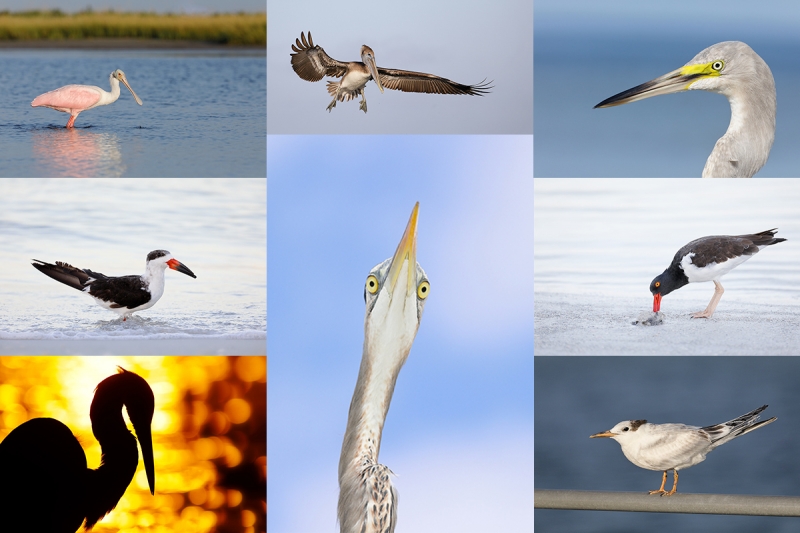













Artie
Wow David did amazing on these 5 and it is actually hard to pick just one. I love #6 with the worm that is not something one can see everyday so well done David. I also love #5 preening with a perfect head angle. Then #3 ruffling is a really sweet pose right down the barrel!
Well done David
Always with love b
David Pugsley Photography did a good think on all 6 of these images!
All 6 of these images are interesting and cute and well made! Not one of the images is just good for me because all 6 images are good!